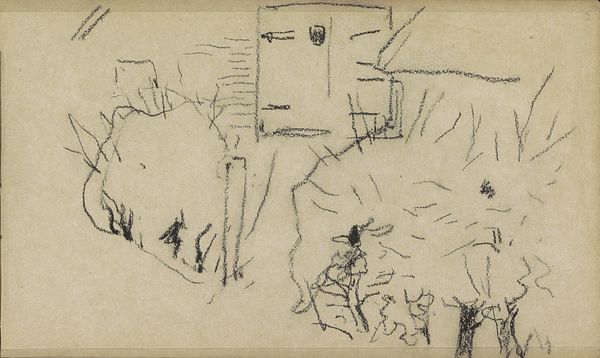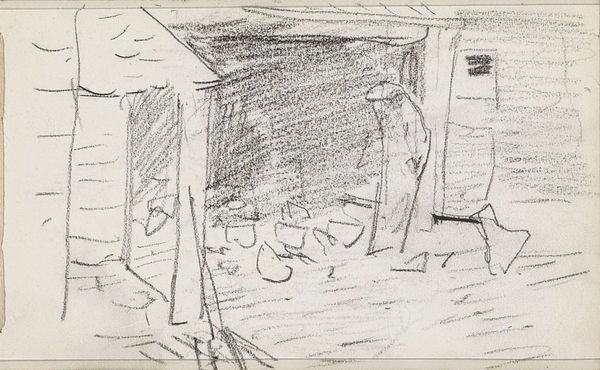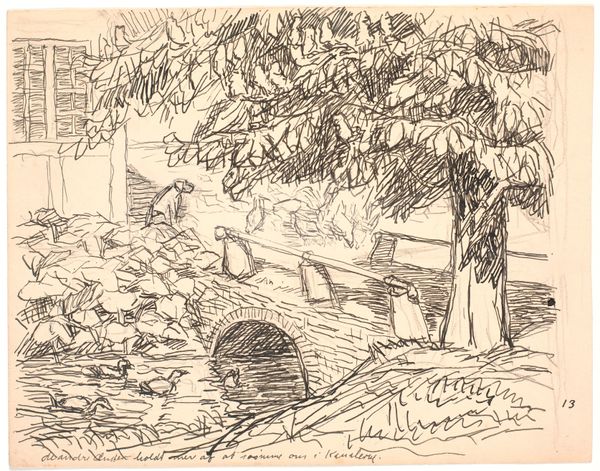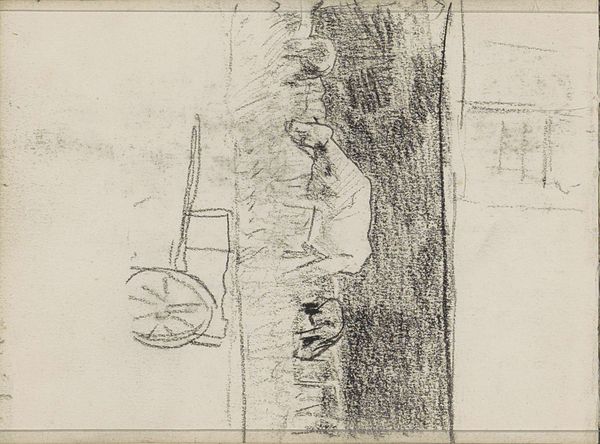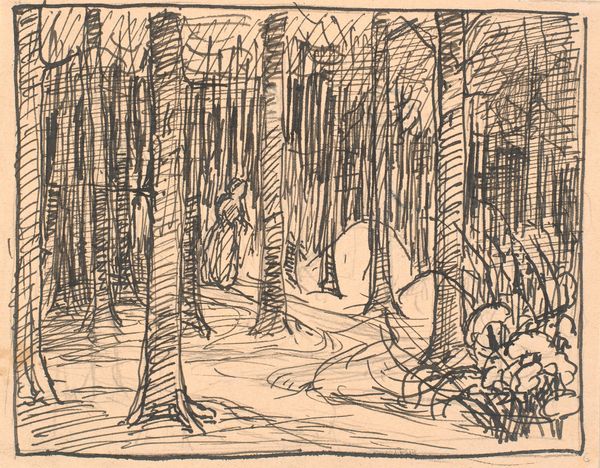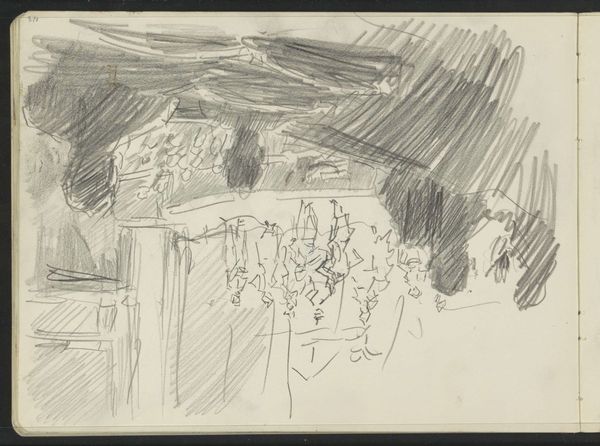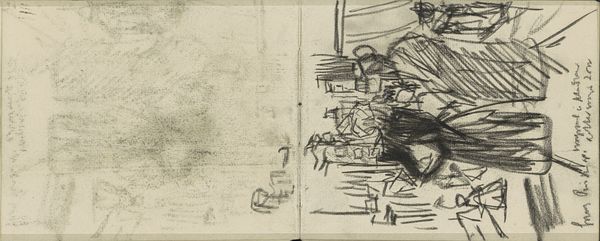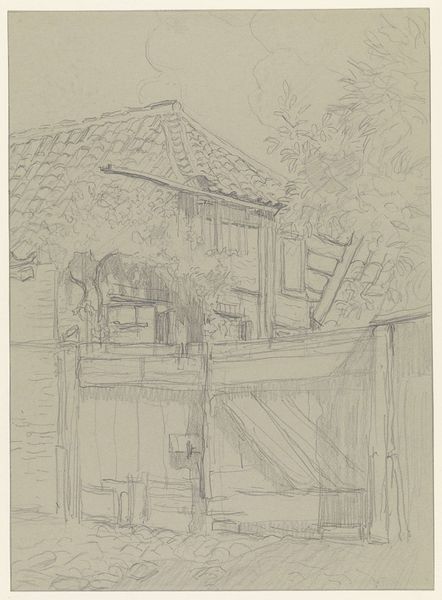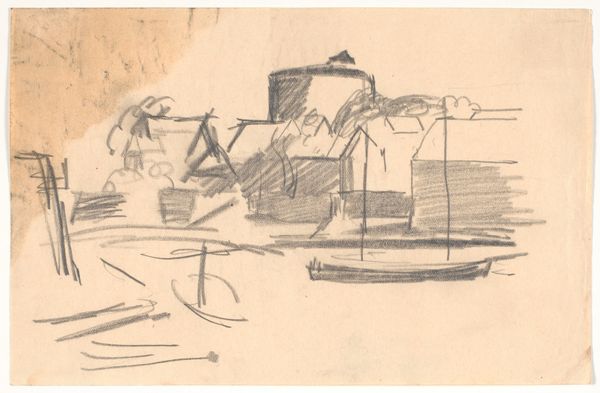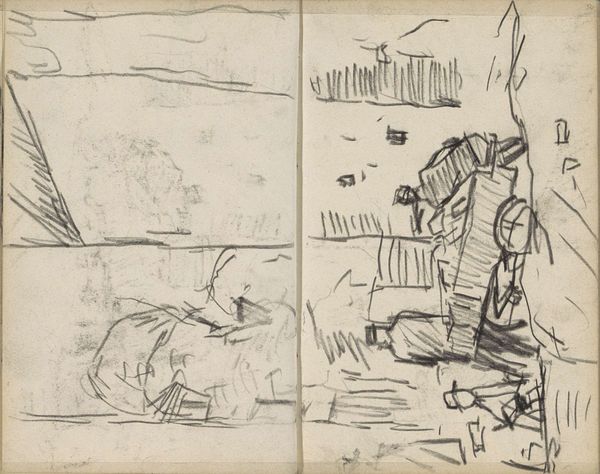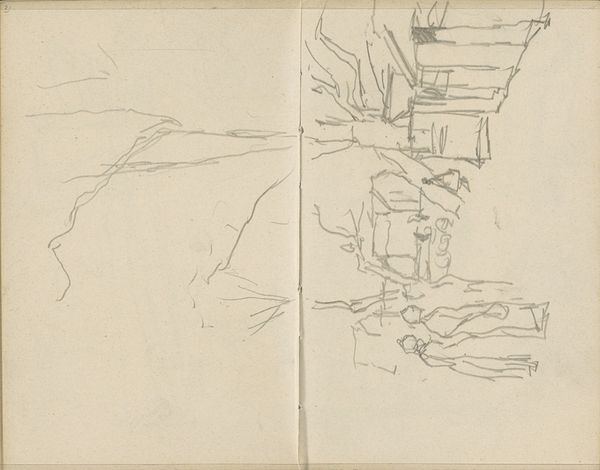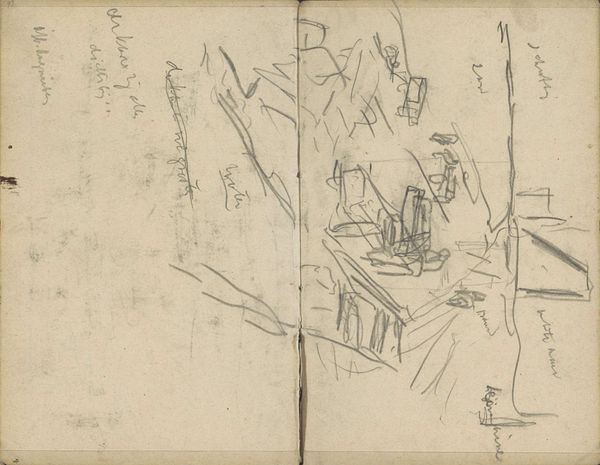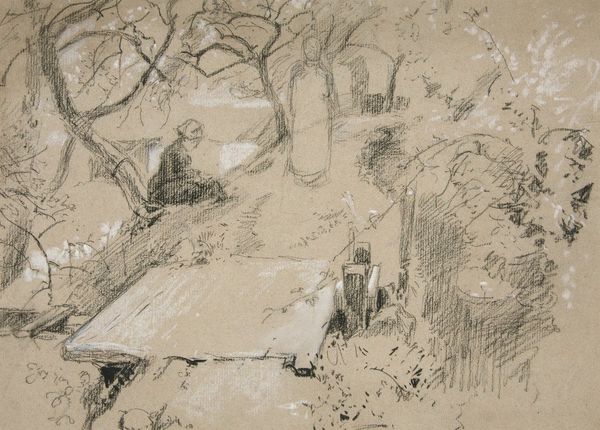
Two Courtesans Enjoying the View from a Teahouse 1786 - 1864
0:00
0:00
print, ink
#
portrait
#
ink painting
# print
#
asian-art
#
landscape
#
ukiyo-e
#
ink
#
genre-painting
Dimensions: 14 1/4 x 30 1/2 in. (36.2 x 77.5 cm)
Copyright: Public Domain
Editor: We're looking at Utagawa Kunisada's "Two Courtesans Enjoying the View from a Teahouse," a print made sometime between 1786 and 1864. It's created with ink, depicting exactly what the title says. I'm struck by how informal and sketch-like it appears. What do you see in it? Curator: I see a direct engagement with the material conditions of Ukiyo-e production. Think about the woodblock process; the labor involved in carving, printing, and the distribution networks required to reach its audience. This wasn't 'high art' in the Western sense but a commodity circulating within a specific social and economic context. Consider how the relatively rapid production allowed for these ‘sketches.’ How does this impact its artistic value in your eyes? Editor: So, the seemingly informal style might be less about artistic choice and more about the need to efficiently produce affordable prints? That shifts my perspective a lot. The focus is now less on the 'genius' of the artist, and more about understanding artmaking as work. Curator: Exactly. Look at the line work, the economy of detail. The labor wasn't just Kunisada’s, but also the carvers and printers. Their skill is vital. Who was consuming this art, and what did it signify in their lives? Was it purely aesthetic, or did it offer something more tangible, a connection to status, or to social networks? Editor: It sounds like looking at it from a materialist angle gives us a much richer understanding. Thinking about the printers, carvers, the ink itself and the intended consumer… Curator: Precisely. It moves beyond appreciating the image alone. The subject, the courtesans, are then viewed through labor, access, production, and economy, beyond any idea of idealized art making. Editor: I appreciate the fresh perspective on what constitutes "art." Now it makes me wonder what contemporary mass produced prints can mean to audiences now and how their production might someday define their value. Curator: Indeed, it prompts critical questions of how value is assigned, perceived and constructed in art now and across history.
Comments
No comments
Be the first to comment and join the conversation on the ultimate creative platform.
